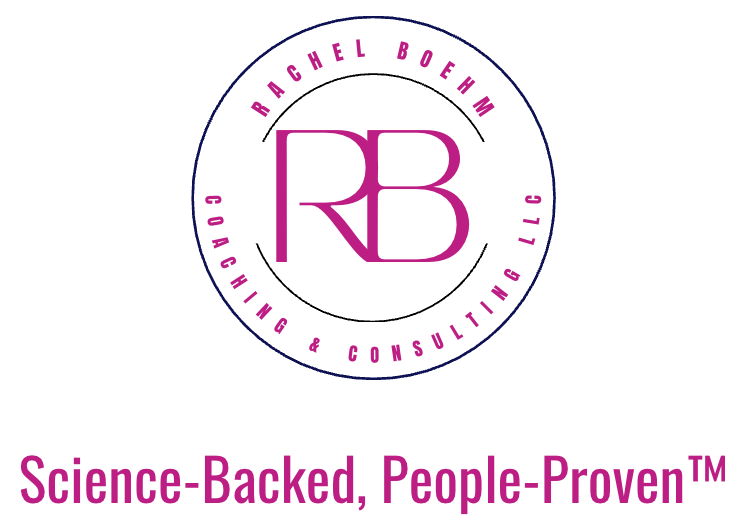Burnout in the Beltway: Why DC Professionals Fail to Prevent Burnout
Burnout is a growing global crisis affecting 48% of workers across the globe and costing companies tens of thousands of dollars per employee. Washington, D.C. has ranked in the top five of the most overworked cities for at least the past two years.
Yet, many individuals and organizations struggle to address it promptly or, better yet, prevent it. Why? Here are a few reasons. These reasons are not limited to the DC Metro Area, by the way.
You Don’t See the Problem
One of the most significant obstacles in addressing burnout is our inability to recognize it in the first place. In his book, Upstream, Dan Heath calls it "problem blindness". This blindness manifests in several ways:
Normalization of Stress:
When constant stress becomes our default state, it starts to feel normal. We get used to the constant pressure and high-stress life. Humans are master adaptors, for better or worse. The thing to remember here is that common and normal are not the same thing.
Collective Stress Blindness:
Basically, it’s a reinforcement of the above. In workplaces and American culture where everyone is under pressure, it becomes difficult to gauge what's "normal" versus what's unhealthy. The collective experience of stress can mask individual struggles, it can lead to unhealthy cultures being labeled normal, and almost reinforce your willingness to go along with them by labeling you the label du jour, “resilient”.
As a result of problem blindness, employees and leaders only realize they or their teams are burning out when it has reached severe levels. By this point, the impact on our well-being and performance may be significant.
Tunneling: “When Things Calm Down, I’ll…”
This could also be called, kicking the can. Ironically, the very state of burnout makes it harder for us to address the issue. This phenomenon, known as "tunneling," creates a vicious cycle:
The "Too Busy" Paradox:
You tell yourself you’re too busy or stressed to deal with burnout, prioritizing immediate tasks over long-term well-being. When things calm down you will get back on track, you tell yourself. Not realizing that things never calm down on their own. You have to make them calm down.
Reactive Mode:
Burnout pushes us into a reactive state, where we're constantly putting out fires rather than addressing the underlying causes of our stress.
Neglecting Self-Care:
In this tunnel vision, we often neglect the very activities and practices that could help alleviate burnout, such as exercise, social connections, and adequate rest.
The tunneling effect creates a self-perpetuating cycle that exacerbates burnout. As we become more stressed and overwhelmed, our focus narrows to immediate, pressing tasks at the expense of our overall well-being.
This myopic view prevents us from taking the necessary steps to address burnout, such as engaging in self-care activities or seeking help. Ironically, the more burned out we become, the less likely we are to recognize and address the problem, trapping us in a cycle of increasing stress and diminishing capacity to cope.
Breaking this cycle requires a conscious effort to broaden our perspective and prioritize long-term well-being over short-term demands. I often close presentations with an “if nothing else do this” tip. Usually, it’s, “Take a breath whenever you feel stress, anger, frustration, tired, sad, etc.”
Misplaced Ownership: The Blame Game
How we perceive the responsibility for burnout significantly impacts our ability to address it:
Self-Blame:
Many of the messaging around burnout has led to this false idea that burnout is the result of an individual’s inability to suck it up, or a weakness, or incompetence. Messaging has also made burnout seem like a mental health problem or diagnosis. It’s not. These misconceptions are damaging. Many individuals internalize burnout as a personal failure, leading to feelings of shame and inadequacy. There is a stigma to admitting to themselves that they are feeling burnt out, making it harder for them to ask for help or make necessary changes.
Overwhelming Responsibility:
Feeling solely responsible for "fixing" ourselves can be paralyzing, especially when burnout has depleted our emotional and mental resources. It’s hard enough to know where to start, feeling like you’re alone in the fight makes it worse.
Stigma and Silence:
The stigma surrounding mental health and workplace struggles often prevents open discussions about burnout, leaving individuals to suffer in silence. Again, burnout is not a medical diagnosis, and yet it’s often discussed alongside mental health problems, connecting the two in people’s minds. While burnout can eventually lead to mental health diagnoses, or exacerbate ones that exist, it is not itself a diagnosis.
The Flip Side: Cynicism and Disengagement
Alternatively, some individuals may swing to the opposite extreme:
Organizational Blame:
Viewing burnout as entirely the organization's responsibility can lead to a sense of helplessness and frustration. I’ve heard a few burnout speakers tell the audience that burnout is not their fault, it’s all society and their employer’s fault. And what that does is strip people of their power. It puts them in victim mode. While burnout is a sign of a problematic culture (society or the workplace or school), culture is made up of individuals. We all play a part. And you can always choose to walk away or do something to protect yourself if you feel you can’t.
Apathy and Resignation:
Prolonged exposure to stressful work environments can result in cynicism and a resigned acceptance of the situation.
Job-Hopping as an Escape:
Rather than addressing the root causes of burnout, some may seek temporary relief through frequent job changes, potentially carrying unresolved issues and habits to new workplaces. This leads us to compare our internal chaos to their apparent calm.
The Silent Struggle: The Isolation of Burnout
Burnout often feels like a solitary battle, fought in silence and isolation. Many of us grapple with its symptoms without even using the term "burnout," feeling as if we're the only ones unable to cope with life's demands. After all, the facade around us sometimes in real life but certainly online is that everything is fine for everyone. We don’t often see what’s behind people’s highlights reel.
The irony is that by believing we're alone in our struggles, we inadvertently isolate ourselves further. We hesitate to reach out, fearing judgment or career repercussions. We might worry about appearing weak to colleagues, friends, or family. In some professional cultures, admitting to burnout can feel tantamount to admitting failure.
Breaking the Burnout Cycle: Key Steps Forward
Addressing burnout requires a multi-faceted approach involving both individual efforts and organizational support.
Given the challenges in doing this, here are three critical strategies to get you started:
Create a culture of awareness: Educate yourself and your team about burnout symptoms and normalize discussions about workplace stress. By fostering an environment where these conversations are encouraged, we can collectively overcome both problem blindness and the reluctance to seek help. Pay attention to changes in behavior and thoughts to more quickly notice when you or a colleague are sliding into stages of burnout.
Implement regular check-ins: Rather than relying on self-recognition, establish a system of periodic assessments. This could involve using standardized tools like the Copenhagen Burnout Inventory or providing staff access to coaches for personal and professional development who are also credentialed in health and well-being. These check-ins can help identify burnout symptoms before they become severe.
Prioritize collective well-being: Shift the focus from individual responsibility to a shared commitment to workplace health. You will want to address 6 drivers of workplace burnout: Unsustainable workload, lack of control, lack of fairness, lack of community, insufficient rewards/recognition, and a disconnect between the values the organization says it holds and the actual culture or a disconnect between the values of the organization and the employee.
Examples of tactics you could implement include setting clear boundaries around work hours, encouraging employees to use their PTO and truly unplug while out of the office, role modeling well-being behaviors at the top, tying employee well-being to manager incentives, and allowing for job crafting.
Acknowledging burnout isn't a sign of weakness—it's an act of courage and self-awareness. By breaking the silence, we not only take the first step towards our own recovery but also create space for others to share their struggles. In so doing, we begin to dismantle the very isolation and cultural norms that make burnout so insidious.
By focusing on these key areas, individuals and organizations can work together to create an environment that not only recognizes the signs of burnout early but also actively works to prevent it. The latter would be ideal given the costs of burnout to organizations (see here and here). Remember, combating burnout is a collective responsibility that requires ongoing effort and attention across the organization.


